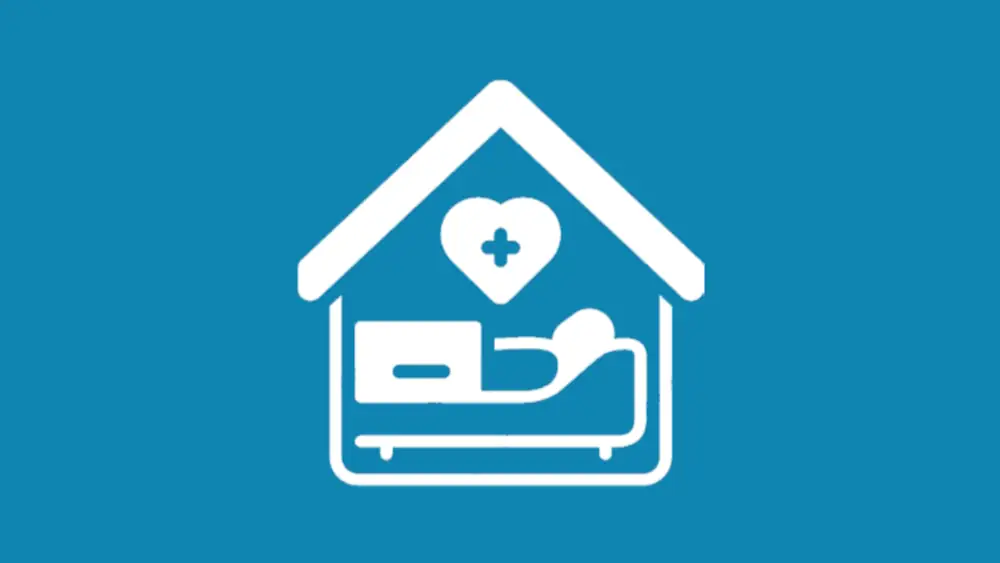Remove Regulatory and Legislative Barriers to High-Value Care

AMGA Goal
Ensure patients receive coordinated, patient-centric care in the most appropriate settings by removing regulatory and statutory obstacles to care delivery and provider operations.
In recent years, Congress and the Centers for Medicare & Medicaid Services (CMS) have worked to remove the barriers and obstacles that prevent medical group practices and integrated systems of care from delivering the highest quality care in the most efficient and cost-effective way. AMGA recommends building on these efforts by continuing to modernize Medicare laws and regulations to support care delivery patterns which have evolved since Medicare’s inception.
Despite reforms, such as Medicare Access and CHIP Reauthorization Act of 2015, and a variety of demonstrations, Medicare laws and regulations remain rooted in the healthcare delivery model prevailing in 1965 when the program was enacted. At that time, Medicare’s structure and rules reflected current care standards, which emphasized acute care delivered in hospitals or individual physician practices. These regulations, while appropriate for the era, do not fully account for the modern realities of healthcare, such as the rise of team-based care, the shift toward outpatient and home-based services, advancements in technology, and the emphasis on high-value care. As a result, patients must navigate a complex system that has developed over time based on outdated rules that constrain innovation and create inefficiencies. This has created unnecessary challenges for healthcare providers to deliver coordinated, high-quality care. Modernizing Medicare statute and regulations to reflect the evolution of care delivery—embracing new care settings, interoperability, and payment models—will be critical to meeting the needs of an aging population and supporting a more effective healthcare system. Doing so is critical to ensure Medicare beneficiaries benefit from the right care at the right time in the right setting.
AMGA recommends reforming Medicare statutes and regulations to promote broader adoption of high-value care, both in value-based care models and traditional Medicare by removing regulations that hinder the operations of group practices and integrated systems without improving access to care or the quality of care.
AMGA recommends Congress:
Reform quality measures based on AMGA’s Value Measure Set
Quality measures must prioritize outcomes-focused metrics and reduce unnecessary reporting burdens.
Quality measurement in the Medicare program plays a critical role in promoting high-value care, improving patient outcomes, and holding providers accountable. Medicare evaluates provider performance across domains, such as patient experience, safety, care coordination, and clinical outcomes. These metrics not only inform payment adjustments and plan ratings, but also help beneficiaries make more informed choices. However, the system faces ongoing challenges, including administrative burden, data lag, and questions about whether current measures truly reflect meaningful improvements in patient care. Improving quality measurement in Medicare requires adopting a streamlined and outcomes-focused approach, such as AMGA’s Value Measure Set. This measure set emphasizes outcomes that matter most to patients while minimizing the administrative burden associated with overly complex and redundant reporting requirements. AMGA selected the 14 measures to address the flaws with the current quality measurement and reporting system, which suffers from duplicative measures and a lack of data standardization. AMGA members report hundreds of different quality measures to various public and private payers, the vast majority of which are not useful in evaluating or improving the quality of care provided. There is a significant cost to measure reporting. Research has indicated that, on average, U.S. physician practices across four common specialties annually spend more than $15.4 billion and 785 hours per physician to report quality measures.1 By prioritizing measures that are evidence-based, actionable, and reflective of population health goals, Congress and CMS will promote high-value care. These changes would help providers focus on delivering high-quality, coordinated care rather than navigating fragmented and duplicative quality reporting systems.
AMGA is pleased CMS introduced the Universal Foundation measure set as a streamlined framework to align quality reporting across its various programs. This measure set draws inspiration from AMGA’s Value Measure Set, which prioritizes outcomes-focused metrics and the reduction of unnecessary reporting burdens. Incorporating AMGA’s Value Measure Set into Medicare’s quality programs—and eventually Medicaid programs—would help reduce reporting fatigue, promote provider engagement, and drive meaningful improvements in care delivery.
Modernize the physician self-referral laws to account for changes in high-value care
High-value models of care should be exempt from self-referral laws, and providers should have the flexibility to identify the most appropriate post-acute care facilities for their patients.
Physician self-referral laws, such as the Stark Law, were designed to prevent conflicts of interest in fee-for-service environments, but they have become misaligned with the evolving landscape of healthcare delivery. As care shifts toward high-value models emphasizing coordination, efficiency, and outcomes, these regulations often hinder innovative arrangements that incentivize collaboration among providers. Current laws create significant compliance challenges and limit opportunities to share savings or risk in ways that align with high-value care goals. Reform is needed for Accountable Care Organizations (ACOs), bundled payment programs, and other value-focused initiatives to thrive while maintaining safeguards against abuse. By adapting to be consistent with modern care delivery, reforms can promote improved care coordination and better patient outcomes. High-value care models should automatically be exempt from self-referral laws, as the incentives the prohibitions were intended to prevent do not exist in high-value care models.
In addition, providers in high-value care models need the flexibility and ability to identify the most appropriate post-acute care provider and facilities and provide this information to their patients. The use of preferred provider lists for post-acute care referrals can help improve patient outcomes by directing patients to high-quality facilities with proven records of accomplishment. Preferred provider networks are typically selected based on performance metrics—such as readmission rates, patient satisfaction, and adherence to care protocols—ensuring continuity of care and better health outcomes. For providers, these lists also streamline the referral process, reduce administrative burdens, and support alignment with high-value care goals by prioritizing care coordination. Additionally, guiding patients toward high-performing post-acute care providers can help optimize healthcare spending and avoid all of the problems associated with poor-quality care.
Reform documentation and billing rules
Current documentation and billing requirements are excessive and often repetitive, creating administrative burden and delays.
Modernizing Medicare’s documentation and billing rules is critical to reducing administrative burdens and improving the quality of patient care. Many current rules are rooted in outdated practices and require excessive documentation for compliance purposes rather than for clinical necessity. These rules often lead to redundant tasks, such as providers needing to document the same information in multiple formats, which takes time away from direct patient care. Adopting a streamlined approach, including the use of templates, electronic health records, and artificial intelligence tools, can improve efficiency and reduce errors.
The transition to high-value care requires substantial investments of time and money by healthcare providers. Practices must engage their legal teams to ensure compliance, retrain staff to accommodate new workflows, model financial performance under high-value models, and update IT systems to meet new reporting requirements. These efforts consume valuable time and resources that could otherwise be devoted to patient care. While successful implementation of high-value care can result in better patient outcomes and justify these investments, the administrative burdens should be minimized. Changes to existing models that introduce further burdens should only occur if absolutely necessary. Streamlining regulatory requirements and providing compliance support for providers will encourage participation in voluntary models while helping those in mandatory models focus more time on patient care and less time navigating complex rules.
A prime example of streamlining is the data collection process used to calculate the Composite Quality Score (CQS) in the upcoming Transforming Episode Accountability Model (TEAM). The CQS relies on quality measures already collected through the CMS Hospital Inpatient Quality Reporting (IQR) Program and the Hospital-Acquired Condition (HAC) Reduction Program.2 By leveraging existing reporting systems rather than creating new requirements, CMS can significantly reduce the compliance burden on providers, encouraging participation and maximizing the time spent on patient care.
Conversely, CMS should avoid introducing new requirements into high-value models without fully understanding their impact on clinical workflows. For example, the Increasing Organ Transplant Access (IOTA) Model would mandate that providers notify all patients on transplant waitlist of every instance when an organ was declined on the patient’s behalf, along with the reasons for declination.3 Although well intentioned, such a policy would impose significant administrative burden on smaller transplant programs and cause emotional distress to patients.
In 2017, CMS launched its Electronic Clinical Quality Measure (eCQM) Strategy Project aimed at balancing value and burden based on stakeholder feedback. Each individual CMS quality program determines the number of eCQMs a health system reports. Providers face a number of burdens in the implementation and reporting of eCQMs. Although CMS has worked hard to address some of these issues,4 consistent burdens remain, such as documentation required for eCQM reporting not directly supporting patient care, multiple submission mechanisms and formats leading to delays and user challenges, and concerns with meaningful connections between certain eCQMs and quality improvement. CMS should continuously evaluate its efforts to remove provider burden to encourage better high-value care participation. In fact, AMGA supports H.R. 483, Health Care Efficiency Through Flexibility Act, which delays the transition of ACOs from reporting quality measures via the CMS Web Interface portal to eCQMs.5
Additionally, frequent coding changes present significant challenges for providers. Given the immense financial impact of risk adjustment on high-value care models, changes to coding standards can necessitate reevaluating financial projections and making program adjustments if those projections worsen. Furthermore, clinicians need retraining to align with new standards and ensure appropriate documentation of patient health. Simplifying coding standards and offering comprehensive retraining programs would facilitate a smoother transition to high-value care.
Reform Medicare Advantage prior authorization to eliminate delays in care
Prior authorization results in significant delays and administrative burdens and should be eliminated to the extent possible.
CMS recently implemented new timeframes for Medicare Advantage (MA) prior authorizations to enhance transparency and reduce delays in care. As of 2024, plans must make a determination for standard prior authorization requests within seven calendar days, and expedited requests must be addressed within 72 hours. Additionally, plans must provide specific reasons for any denials, improving clarity for both providers and patients.
MA prior authorization rules and timelines often result in significant care delays for patients and administrative burdens for providers. These delays occur as providers wait for approvals for medically necessary services, which can create stress for patients needing timely care. Most prior authorization requests are ultimately approved on appeal, but the process consumes valuable time and resources, detracting from patient care. The appeals process also highlights inefficiencies, as the high approval rates suggest that many initial denials may be unwarranted. These delays can exacerbate medical conditions, hinder access to critical treatments, and lead to frustration among patients and clinicians alike, underscoring the need for streamlined prior authorization policies. For example, an AMGA member reports instituting a 14-day delay in scheduling magnetic resonance imaging (MRI) simply to manage the denials from payers. While ultimately scheduled, approved, and reimbursed, the system effectively penalizes the patient.
The need for prior authorization is also eliminated as more providers transition to high-value model of care, whether through MA plans or other models. High-value care shifts the focus from the quantity of services provided to the quality and outcomes of patient care, effectively eliminating incentives for unnecessary tests and procedures. Under traditional fee-for-service models, providers are reimbursed based on the number of services performed, which can lead to excessive testing and procedures, some of which may not be medically necessary. However, in a high-value care system, providers are rewarded for improving patient health outcomes, reducing hospital readmissions, and managing chronic conditions effectively. This approach naturally discourages the overutilization of services, thereby reducing the need for prior authorization—a process originally designed to control unnecessary costs. By aligning provider incentives with patient health rather than service volume, high-value care streamlines the approval process, minimizes administrative burdens, and ensures that patients receive only the most appropriate and necessary treatments.
Reform post-acute care payment silos
The lack of a unified payment framework for post-acute care inhibits seamless transitions between care settings and creates barriers for providers who are striving to deliver integrated, high-value care.
Medicare’s payment silos for post-acute care services—such as skilled nursing facilities (SNFs), inpatient rehabilitation facilities (IRFs), home health agencies (HHAs), and long-term care hospitals (LTCHs)—create significant administrative burdens. Each type of care operates under distinct payment systems and quality reporting programs, with differing rules, documentation requirements, and reimbursement processes. This fragmentation requires providers to navigate complex regulations, leading to inefficiencies and delays in patient care coordination. The lack of a unified payment framework also inhibits seamless transitions between care settings, creating barriers for providers who are striving to deliver integrated, high-value care. Modernizing these payment systems to promote care coordination across settings would reduce administrative burdens, improve outcomes, and align with Medicare’s broader shift toward high-value care delivery.
Eliminate the three-day stay requirement for skilled nursing facility (SNF) care
The requirement for a three-day inpatient hospital stay as a prerequisite for coverage of skilled nursing facility (SNF) care is outdated and unnecessarily restrictive. Eliminating it would reduce hospital congestion, improve care coordination, and lower healthcare costs.
The rule requiring a three-day inpatient hospital stay as a prerequisite for coverage of SNF care is outdated and unnecessarily restrictive. This policy, established when hospital stays were longer and healthcare delivery was less advanced, no longer reflects the capabilities of modern medicine. Today, many patients can safely transition to SNF care or receive similar support without an extended hospital stay. Eliminating this requirement would reduce hospital congestion, improve care coordination, and lower healthcare costs by allowing clinicians to determine the appropriate level of care based on medical necessity rather than arbitrary length-of-stay criteria. Moreover, doing so aligns with Medicare’s broader efforts to promote high-value care, enabling quicker access to post-acute services and better patient outcomes.
ACOs and MA plans benefited from CMS’ ability to waive the three-day stay requirement, and they have demonstrated lower hospitalization rates and improved care coordination, emphasizing the benefits of a more flexible, patient-centered approach to SNF utilization. By eliminating the mandatory three-day stay, as was done during the COVID-19 public health emergency (PHE), the waiver supports a more efficient and cost-effective healthcare system while enhancing patient outcomes. The waiver of the Medicare-required three-day hospital stay for SNF coverage has significantly reduced costs and improved patient outcomes by allowing for more direct and efficient transitions to post-acute care.6 Waiving this requirement enables patients to receive timely rehabilitative care, reduces hospital congestion and overall expenditures, and improves functional recovery as well as reduces readmission rates.
Reform Medicare Annual Wellness Visit rules
Annual Wellness Visits require extensive documentation and data collection and entry, much of which is redundant since it has already been recorded in the patient’s record.
The Medicare Annual Wellness Visit (AWV), introduced as part of the Affordable Care Act, is intended to promote preventive care for beneficiaries. However, it has become a source of significant administrative burden for providers. The AWV requires extensive documentation, including the creation of a personalized prevention plan and the review of a detailed health risk assessment. These requirements often demand time-consuming data collection and entry, much of which is redundant, as it has already been recorded in the patient’s record. The complexity of compliance detracts from time better allocated to direct patient care. Also, the lack of alignment with other Medicare quality initiatives compounds the inefficiencies. Simplifying the AWV process and integrating it into existing care delivery frameworks would reduce provider burden while maintaining its preventive benefits.
Eliminate geographic and originating site restrictions for Medicare telehealth coverage
The geographic and originating site requirements for Medicare telehealth coverage are outdated barriers that hinder access to care.
Telehealth serves as an excellent case study for demonstrating how a supportive policy framework can positively affect patient care through advances in technology. Before the COVID-19 PHE, telehealth utilization was extremely low.
Under traditional Medicare rules, telehealth services generally are covered only if the patient is located at an approved originating site, such as rural health clinics, federally qualified health centers, hospitals, physician offices, or SNFs. Notably, the list of eligible originating sites in the Social Security Act does not include the patient’s home,7 requiring patients to travel to physician offices or clinics to receive care. Prior to the COVID-19 PHE waiver flexibilities, this statutory barrier presented a major care access issue for patients with limited transportation, who would have greatly benefited from provider care via telehealth communication technology. Further, outside of certain Medicare demonstration projects, patients were required to receive telehealth services from an eligible “originating site” located in a rural health professional shortage area (HPSA) or a county not included in a Metropolitan Statistical Area.8 These restrictions aim to target areas with limited access to in-person healthcare services, but exclude many urban or suburban beneficiaries who could also benefit from telehealth.
Further, allowing healthcare providers to conduct telehealth appointments outside of their usual facility offers numerous benefits for both patients and the healthcare system. Providers can offer more flexible scheduling, reducing wait times and improving continuity of care. This flexibility also helps alleviate provider burnout by allowing them to deliver care from a location—including their own homes—that best suits their workflow, ultimately increasing efficiency. Additionally, in times of PHEs or natural disasters, remote telehealth capabilities ensure that patients continue to receive necessary medical attention without overwhelming healthcare facilities.
The geographic and originating site requirements for Medicare telehealth coverage are outdated barriers that hinder access to care, particularly for beneficiaries in underserved and rural areas. These requirements, which limit telehealth services to specific locations such as rural areas and approved healthcare facilities, fail to account for the widespread adoption of telehealth technology and its demonstrated effectiveness in delivering care across settings. Eliminating these restrictions would allow beneficiaries to receive telehealth services while in their homes or other convenient locations, fostering greater equity in access to care. Removing these limitations aligns with the modern realities of healthcare delivery, supports care continuity, and enhances the ability of Medicare to meet the needs of an increasingly tech-savvy patient population. By modernizing telehealth regulations, Medicare can expand access to timely, high-quality care, particularly for those who face mobility, transportation, or geographic barriers.
The waiver of originating site and geographic location requirements during the PHE allowed medical group practices and integrated systems of care to have embedded telehealth in their clinical workflow. Telehealth enhances patient engagement, which is fundamental to the success of high-value care models. Therefore, it is critical for Congress to make these flexibilities permanent, such as through the Creating Opportunities Now for Necessary and Effective Care Technologies for Health Act.9
Permanently extend the ability to prescribe controlled medication via telehealth
Congress should permanently waive the prohibition against the prescribing of controlled substances during a virtual visit.
The ability to prescribe controlled medications via telehealth has proven essential in expanding access to care, particularly for patients in rural or underserved areas and those managing chronic conditions, pain, or mental health needs. During the COVID-19 PHE, temporary waivers allowed telehealth prescribing without requiring an in-person evaluation, enabling patients to receive timely and necessary treatments. As virtual healthcare expands, permanently extending this ability to prescribe controlled substances during a virtual visit is critical to ensuring continuity, reducing barriers to care, and addressing provider shortages. Safeguards against misuse can be maintained while leveraging telehealth to meet the growing demand for accessible, patient-centered care. Congress should permanently waive the prohibition against the prescribing of controlled substances during a virtual visit.
Establish a national licensing framework
A national licensing framework or an expanded interstate compact would allow physicians and other healthcare providers to practice in multiple states without duplicative licensing processes.
As healthcare delivery increasingly incorporates telehealth and mobile technologies, the need for a national physician and provider licensing framework has become more pressing. Current state-by-state licensing requirements create significant barriers for patients requiring continuity of care or specialized expertise from their known and trusted physicians. A national licensing framework or an expanded interstate compact would streamline this process, enabling physicians and other healthcare providers to practice in multiple states without duplicative licensing processes. This reform would enhance access to care and ensure patients have the option of receiving treatment from a care team familiar with their history and individual needs.
A national framework is particularly useful for patients in rural settings or for patients who need to access specialists, which can be a challenge in large parts of the country. By nationalizing the medical license, these patients can access care across state lines via telehealth. This reform also recognizes that many integrated healthcare systems are multi-state. As a result, these systems may have specialists and subspecialists located in an urban setting or near a tertiary care hospital in one state that is unavailable to patients living in neighboring states via telehealth, necessitating a potentially long drive.
“There is significant education that goes into ensuring that risk adjustment coding completely and accurately captures the disease burden of patients. There is also significant investment in systems that reduce the burden of coding accurately and completely. Changing the rules midstream means time and money needs to be spent revamping education and these systems. Beyond lost time and increased investment, revenue that is projected to come from risk coding is being reduced by millions of dollars each year, meaning that there are fewer resources available to reinvest in the ACO to better care for patients. ”
— Scott Hines, MD, Chief Quality Officer, Crystal Run Healthcare
Conclusion
Effective collaboration among stakeholders is crucial for overcoming barriers due to outdated Medicare statutes and rules. Providers, payers, policymakers, and patient advocacy groups must work together to identify and address challenges.
Addressing statutory and regulatory barriers will help reduce administrative complexity in the healthcare system and ensure Medicare’s promise from the 1960s matches the on-the-ground experience of patients and clinicians today. Modernizing Medicare laws and regulations will improve provider operations and reimbursement structures, which ultimately will improve healthcare delivery and the patient experience. A list of additional barriers are detailed here.

Enhance Patient Engagement
Empower patients to take an active role in their healthcare decisions.

Improve Health Outcomes
Address disparities to ensure all populations receive high-quality care.

Protect Patient Dignity at End of Life
Promote compassionate care that respects patient preferences.

Remove Regulatory and Statutory Barriers
Reduce administrative burdens that impede care delivery.

Support Practices Serving Rural and Underserved Populations
Ensure equitable resources and support for all providers.

Ensure the Long-Term Sustainability of High-Value Care
Establish a payment model that ensures long-term viability for providers.
For more information on the AMGA MACRA and Value-Based Care Task Force Recommendations
1 Casalino LP, Gans D, Weber R, Cea M, Tuchovsky A, Bishop TF, Miranda Y, Frankel BA, Ziehler KB, Wong MM, Evenson TB. US Physician Practices Spend More Than $15.4 Billion Annually To Report Quality Measures. Health Aff (Millwood). 2016 Mar;35(3):401-6. doi: 10.1377/ hlthaff.2015.1258. PMID: 26953292.
2 89 FR 69775
3 89 FR 43521
4 https://pmc.ncbi.nlm.nih.gov/articles/PMC8510288/#sec10
5 https://www.congress.gov/119/bills/hr483/BILLS-119hr483ih.pdf
6 Center for Medicare and Medicaid Innovation, Skilled Nursing Facility 3-Day Waiver: Analysis of Use in ACOs 2014 to 2019. Available at www.cms.gov/priorities/innovation/data-and-reports/2023/snf-waiver-summary
7 42 CFR 410.78(b)(3)
8 2 CFR 410.78
9 https://www.britt.senate.gov/wp-content/uploads/2025/04/connect1.pdf